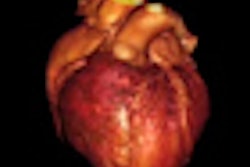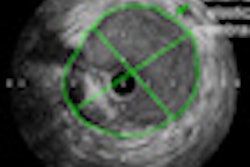How much does it matter if a child with an ankle injury has an x-ray exam that may not be diagnostically beneficial? It matters a lot to an emergency physician at Toronto's Hospital for Sick Children, who is working to increase awareness among her peers about the importance of using proven clinical decision rules for ordering ankle radiographs.
The campaign to reduce unnecessary exposure of even small radiation doses to children and to reduce healthcare expenses by eliminating diagnostically useless x-ray exams is a needed one. A survey of emergency physicians working throughout Canada and the U.S. revealed that less than one-fourth of the respondents were aware of a clinical decision rule for low-risk ankle radiographs, and only 12% were sufficiently knowledgeable to apply it. The study was published in the July issue of Academic Emergency Medicine (2010, Vol.17:7, pp.709-717).
Kathy Boutis, MD, a pediatric emergency medicine physician specializing in musculoskeletal injuries, is concerned that hundreds of thousands of diagnostically useless x-ray exams are being taken of children's ankles in hospitals throughout the world. An estimated 2 million children living in North America incur ankle injuries each year. Each year in the province of Ontario alone, approximately 35,000 children are admitted to hospital emergency departments with ankle injuries. An estimated 90% of them will have an x-ray exam. Of these 31,500 radiographic exams, only 12%, or 3,780, will show a bone fracture.
The ankle rules
Decision rules to determine when it is appropriate to order a radiograph for an ankle injury were validated in a study from the University of Ottawa in Ontario that showed the rule was 100% sensitive for adults. The study was published in 1993 in the Journal of the American Medical Association (Stiell IG, Vol. 269:9, pp. 1127-1132).
The first of the Ottawa ankle rules states that an ankle radiographic series is only necessary if the patient has pain near the malleoli, along with one of the following findings:
- Inability to bear weight immediately after the injury and for four steps in the emergency department
- Bone tenderness at the posterior edge or tip of either malleolus
- Patient age greater than 55 years
The second rule states that a foot radiographic series is only necessary if the patient has pain in the midfoot and bone tenderness at the navicular bone, the cuboid, or the base of the fifth metatarsal.
These rules were publicly validated four years later as being 100% sensitive for use with children by Amy Plint, MD, a pediatric emergency physician at Children's Hospital of Eastern Ontario in Ottawa. Plint and colleagues subsequently reported that use of the Ottawa ankle rules in a clinical trial reduced the number of ankle radiographs ordered by 28% (1999, Acad Emerg Med, Vol. 6:10, pp. 1005-1009).
Subsequently, a low-risk ankle rule (LRAR) was developed and validated as a clinical decision rule regarding the indications for ankle radiographs in children with acute blunt ankle trauma. More than 600 children between the ages of 3 and 16 were enrolled in a clinical trial conducted at Children's Hospital Boston and the Hospital for Sick Children between January 1998 and September 2000 (2001, Lancet, Vol. 358:9299, pp. 2118-2121).
The LRAR states that radiographs may not be diagnostically beneficial for children with clinical findings restricted to the distal fibula, the adjacent lateral ligaments, or both. This adds to the Ottawa ankle rules, because many young children with mild isolated ankle injuries refuse to bear weight.
The findings of this study determined that low-risk examinations that did not include ankle x-ray exams did not miss any high-risk fractures, and that a low-risk examination was 100% predictive of a low-risk diagnosis. Principal investigator Boutis and colleagues determined that using LRAR could eliminate x-ray exams for 62.8% of the patient cohort, compared with a 12% reduction if only the Ottawa ankle rules were applied.
The current clinical trial and the survey
In an interview with AuntMinnie.com, Boutis said that she first became interested in the overuse of musculoskeletal radiographs as a fellow in pediatric emergency medicine at Children's Hospital Boston. Participation in the LRAR project whetted her interest in promoting awareness of ankle decision rules.
Boutis and colleagues conducted the survey of emergency physicians affiliated with the Pediatric Emergency Research of Canada (PERC) and the American Academy of Pediatrics Section on Emergency Medicine (AAP-SOEM) to understand potential issues for physicians in using LRAR in emergency departments.
"We wanted to design a knowledge translation study with these opinions in mind in order to select the most effective strategies," Boutis explained.
More than 850 pediatric emergency physicians were sent the survey: More than 75% of the Canadian physicians responded, and 45.7% of the U.S. physicians responded. Almost all respondents reported using at least one of the ankle rules, and utilization was three times more likely in a university-affiliated pediatric emergency department. However, only 6.2% of the respondents reported that LRAR was their preferred decision tool when assessing a child with an ankle injury.
Although a majority of respondents agreed that ankle x-ray rules could save time and were easy to apply, the most common reason respondents cited for ordering an ankle x-ray exam was parental satisfaction. They also were concerned about missing a fracture, or they blamed nurses who ordered the exams in their hospital for ignoring the rules. Whether rules were formally incorporated in nursing directives was outside the scope of the survey, Boutis said.
"What we learned is that the low-risk ankle rule and, to a lesser extent, the Ottawa ankle rules, need to be more actively promoted and their benefits understood and implemented into clinical protocols," Boutis said. "The most important place to impact is the emergency department itself. But radiology departments can make an impact at the level of the radiology technician. Departments can put in quality control measures at the level of the technician to ensure a given rule has been considered prior to an x-ray being taken."
This is one of the reasons that she and her colleagues implemented the CRACKED clinical study, which began to recruit patients in November 2008.
The primary objective of this feasibility trial is to assess a LRAR implementation strategy that promotes the use of the low-risk ankle rule. The secondary objectives are to evaluate other clinical outcomes, such as missed significant fractures, the number of unscheduled x-ray exams, length of stay in the emergency department, and patient/parent/physician satisfaction. Sensitivity and specificity will be measured. A comparison of costs for all low-risk ankle injuries will be made.
The study includes 78 weekly observations on x-ray exam rates at each of six sites. Intervention sites will have three six-month phases of implementation, from no implementation to low- and then high-intervention initiatives.
"We will evaluate the impact of implementing the LRAR into different emergency department practice settings and test its impact on key clinical and economic measures," she said. "We hope it will provide high-level evidence on how to best implement the LRAR. If successful, this research will ultimately lead to a new standard of care for x-ray use in the child with an acute ankle injury which will safely forego unnecessary radiation exposure, improve efficiency of patient flow in busy emergency departments, and reduce healthcare costs."
Validated radiograph clinical decision rules are not restricted to ankles. They exist for hands, wrists, elbows, shoulders, the neck, the spine, hips, and knees. They have been incorporated into clinical radiology decision-support software from both Medicalis of Kitchener, Ontario, and MedCurrent of Toronto. Adoption of such technology and computerized order-entry systems may make Boutis' awareness campaign a whole lot easier.
By Cynthia E. Keen
AuntMinnie.com staff writer
September 24, 2010
Related Reading
Radiologists call for curbs on overuse of imaging, August 24, 2010
CMS unveils imaging decision-support initiative, July 23, 2010
Pediatric ankle exam predicts need for x-rays, November 1, 2002
Ottawa Knee Rule cuts costs when institutions maintain high sensitivity, May 15, 2000
Copyright © 2010 AuntMinnie.com


















